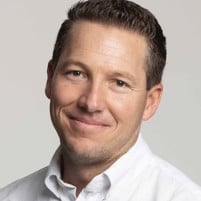A leaky boat can’t reach its next destination. Likewise, a revenue operations process that doesn’t prioritize customer retention, adoption, and expansion can’t achieve long-term growth.
That principle is core to net dollar retention, an increasingly important metric for gauging your business’ health and viability over time.
As Clari’s global vice president of account management, I view NDR as my North Star—guiding our revenue operations organization to customer success that drives mutual growth.
In my role, I live and breathe customer success every day. I also live in Clari RevOps technology to track key customer success and revenue metrics, including NDR.
So what is NDR?
Net dollar retention is a percentage that accounts for your customer expansion and churn in the context of your company’s overall annual recurring revenue (ARR). This formula calculates NDR:
Net Dollar Retention (NDR) = (Beginning ARR - Churn + Expansion) / (Beginning ARR)
NDR gives you vital information about your organization’s ability to keep your customers, keep them engaged, and deliver innovations that align with their strategic business goals.
It’s based on a simple concept:
- Happy customers are more likely to stay, renew, increase usage and adoption, and expand their business with you—meaning more revenue over time.
- Frustrated customers are more likely to reduce their spend or even churn.
Net dollar retention is a key metric for hypergrowth companies, firms in private equity partnerships, and organizations on the path to an initial public offering (IPO). According to Crunchbase, companies that successfully go public typically have an NDR rate of well over 100%, with a median NDR rate of about 107%.
NDR: The metric aligning customer success and revenue
By tracking NDR, customer success and revenue teams are working together to achieve common goals.
Throughout my career, I’ve seen customer success transform into a powerful revenue driver. Yet historically, it was difficult to align pre- and post-sales teams and the different ways they drove revenue—e.g. securing net-new logos vs. renewals. It was also more challenging to consistently track how much revenue customer success teams were contributing.
Now with RevOps technology, organizations can connect all of their revenue sources within one system.
Every day, I see firsthand how RevOps technology empowers new levels of cross-functional alignment and collaboration—so that everyone is responsible for delivering best-in-class customer experiences that drive growth.
I’m excited to share three ways I use Clari to measure and boost customer success: centralizing revenue streams in one platform, aligning customer health levels with concrete revenue dollars, and operationalizing CRM data to the fullest.
1. Connecting customer success revenue streams through RevOps technology
Modern companies know that customer success is an essential part of their overall revenue. Just a 5% increase in customer retention can increase profitability anywhere from 25% to 125%, according to research by Bain & Company and Harvard Business School.
There’s incredible value in connecting every revenue stream across your business through one single source of truth. Within complex, hypergrowth organizations, alignment can be an ongoing challenge. But if there’s one thing that definitely shouldn’t be a challenge for organizations, it’s aligning on revenue.
RevOps technology brings increased alignment and shared visibility to stakeholders across your business. It helps your teams eliminate duplicative work, gain new levels of data-driven insights, and harness a centralized view of everything that’s happening with any given customer.
That’s why we use Clari, at Clari.
At Clari, we have dedicated team members who focus on retention and growth—our account managers—and our customer success managers, who are responsible for adoption, engagement, and experience. There’s often overlap, and many customer engagements require close collaboration. Clari is a critical platform for keeping our cross-functional customer teams aligned and driving successful growth outcomes.
Clari delivers solutions that support all aspects of the customer lifecycle. This journey begins with onboarding new customers, all the way through to delivering the services needed to meet the demand for new use cases and offerings.
I use Clari’s forecast categories to keep tabs on our expansion inventory, so that I can see deals that are open or closed-won for our strategic accounts. I have two sales dashboards for this: one where I track expansion opportunities by customer, and another where I can view expansions by individual account managers. I do the same for our customer success managers.
With Clari, we know exactly who’s owning what. We drive greater accountability with RevOps technology, and we can work together to get deals across the finish line—powering better NDR.
2. Making customer health tangible by linking it to revenue dollars
To track customer health, many organizations use what’s commonly called a “stoplight” or “traffic light” system, because it uses familiar green, yellow, and red colors.
- Green: These are your happiest and healthiest customers. They’re most likely to renew and, ideally, expand their investment.
- Yellow: This color applies to customers who might be happy, but there are still potential risks to retention and/or limited potential for growth.
- Red: This indicates customers who are at risk of erosions or down-sells (which are defined as partial churns) or full churns.
According to customer success software leader Gainsight, a variety of factors can influence which customer health category your customers fall into—including overall product usage, survey results, length of time as a customer, product feedback, overall relationship, and much more.
Beyond color symbolism alone, it’s critical to understand the difference between customers in green vs. yellow vs. red health and what that difference means in terms of dollars.
You can’t improve what you can’t measure. Knowing the revenue values for each level of customer health gives you more intelligence into the main motions that drive NDR: retention, adoption, and expansion.
To start, I recommend thinking through the following questions:
- Do you know exactly why you want your customers in green health?
- Do they renew more reliability? With more growth? For longer terms?
- Do they purchase cross-sell products?
- Do you know definitively that a customer with green health vs. red health has a higher lifetime value and increases year over year spend with your organization?
- Do you have the data to back that up?
- Can you identify any customers in green health that aren’t engaged in active upsell or cross-sell opportunities?
- And do you know why?
When you can confidently answer those questions with solid evidence, you open up a new world of opportunities for customer-success-driven growth. You can uncover new insights and trends into which of your customers are renewing versus which accounts show declining health or are at risk of churning.
In Clari, I use the Dashboards module to pull together data and analytics from across our modules—Pulse, Forecasting, Opportunity, and Account Engagement—into a single pane of glass. With all this information available in one place, I can easily change the lens to examine the business by segment, health, risk probability, and expansion propensity.
I like to say that Clari is so easy “I could use it with my elbows,” meaning that as an end user, I have the power to inspect my business on both the macro and micro levels—all while sparing the operations and analytics teams additional work. It’s true that you can only impact what you know, and now I know more than ever about our customers.
See it for yourself in this short video:
3. Getting the most out of the CRM data you already have
CRMs capture a lot of data points, and that’s great. Yet so much of that data goes unused. A lot of rich information sits behind the CRM curtain, waiting to be applied.
With the right analytics, your existing data can transform to power smarter decision making and more effective actions.
It’s my mission to never let valuable data go underutilized, especially when it could drive meaningful action. With Clari, I pull in vital information that can mean the difference between a closed-won or closed-lost expansion deal.
Here are some of the metrics I pull from our CRM into Clari for next-level insights.
- Net Promoter Score (NPS): An NPS score measures your customers’ experience, loyalty, and willingness to recommend your company to others. If a customer won’t recommend you to a colleague or a friend, they might not be willing to renew either. Reviewing your NPS score in terms of revenue can help your team identify new opportunities for expansion or support proactive interventions to improve relationships.
- Customer Satisfaction (CSAT): CSAT scores are a collection of customer feedback that measure how happy your customers are with your products or services. Knowing customer satisfaction can help you take appropriate action based on that sentiment. For example, customers with high satisfaction scores might be great candidates for renewals, cross-sells, or upsells.
- Customer Health Insights: As noted above, customer health is about more than color-coding. Detailed information, specifically around adoption health or executive relationship health, can help your team allocate time and resources appropriately to unlock expansion opportunities or reduce retention risk.
- Activity Data: Understanding the level of engagement between your organization and your customers is key. Account engagement insights within Clari allow me to dive deeper into emails, meetings, and other interactions occurring across revenue functions—like sales, customer success, support, services, and more—giving me and the broader team true 360° visibility into the customer experience.
Clari connects data from across CRM systems, then translates this wealth of information into insights for opportunity management, forecasting, and account engagement.
Ultimately, growing NDR means having the information and alignment you need to do right by your customers. With RevOps technology, you can make the customer journey smooth sailing for everyone onboard.
Read more:


